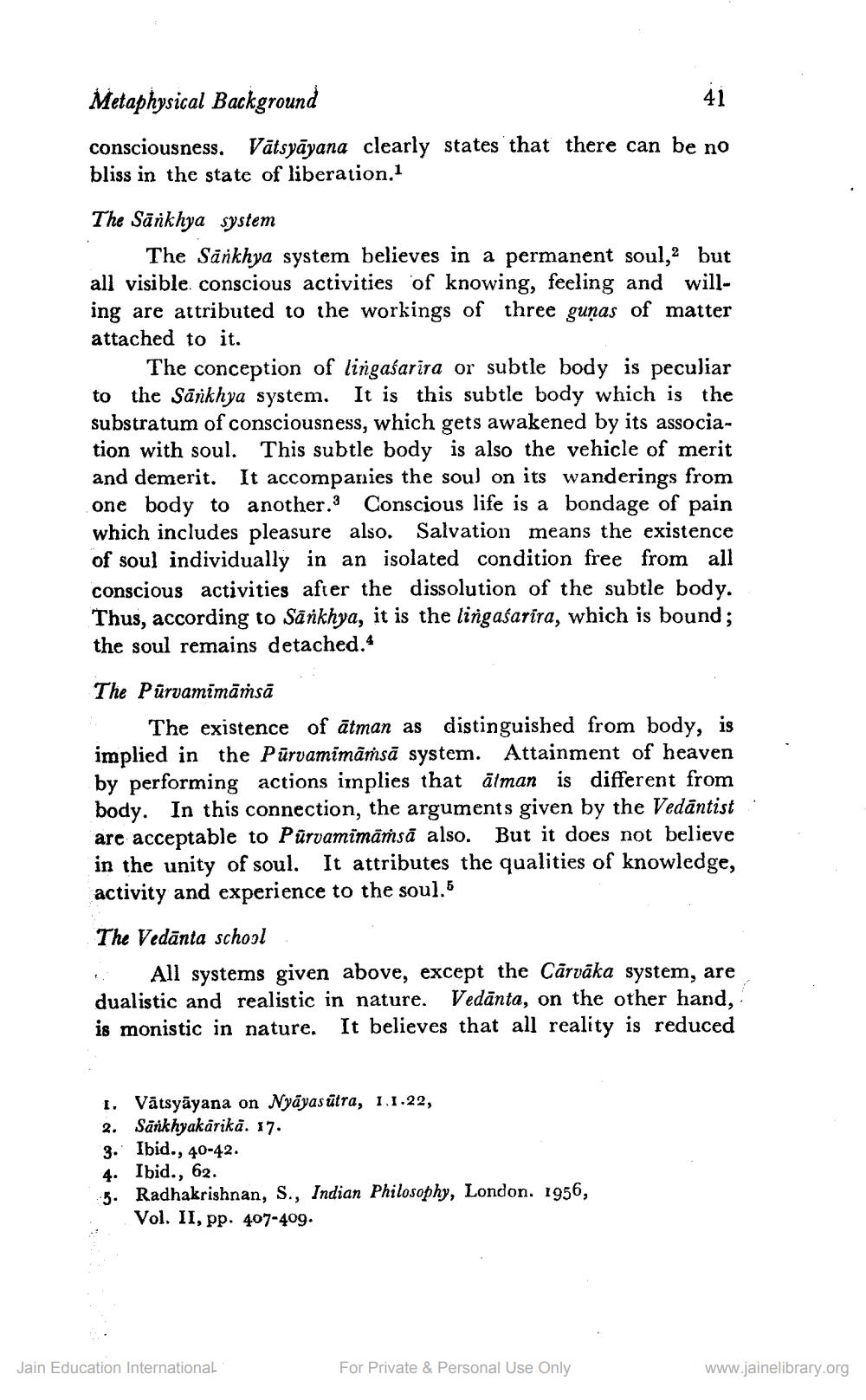________________
Metaphysical Background
consciousness. Vātsyāyana clearly states that there can be no bliss in the state of liberation.1
The Sankhya system
The Sankhya system believes in a permanent soul,2 but all visible conscious activities of knowing, feeling and willing are attributed to the workings of three gunas of matter attached to it.
The conception of lingasarira or subtle body is peculiar to the Sankhya system. It is this subtle body which is the substratum of consciousness, which gets awakened by its association with soul. This subtle body is also the vehicle of merit and demerit. It accompanies the soul on its wanderings from one body to another.3 Conscious life is a bondage of pain which includes pleasure also. Salvation means the existence of soul individually in an isolated condition free from all conscious activities after the dissolution of the subtle body. Thus, according to Sänkhya, it is the lingasarira, which is bound; the soul remains detached.4
The Purvamimāṁsā
The existence of atman as distinguished from body, is implied in the Purvamimāṁsā system. Attainment of heaven by performing actions implies that alman is different from body. In this connection, the arguments given by the Vedantist are acceptable to Purvamimämsä also. But it does not believe in the unity of soul. It attributes the qualities of knowledge, activity and experience to the soul.5
..
41
The Vedanta school
All systems given above, except the Carvaka system, are dualistic and realistic in nature. Vedanta, on the other hand, is monistic in nature. It believes that all reality is reduced
1. Vätsyāyana on Nyayas ütra, 1.1.22,
2. Sankhyakärikā. 17.
8
3. Ibid., 40-42.
4. Ibid., 62.
5. Radhakrishnan, S., Indian Philosophy, London. 1956,
Vol. II, pp. 407-409.
Jain Education International
For Private & Personal Use Only
www.jainelibrary.org




